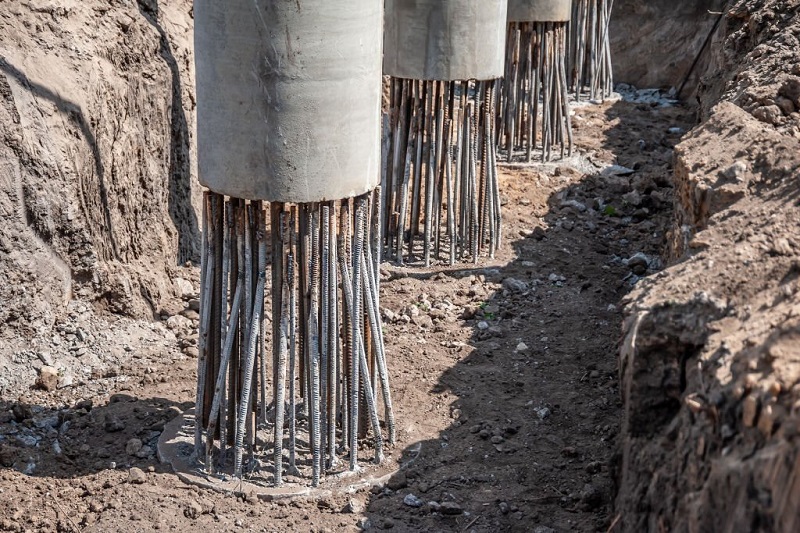A Comprehensive Guide to Bored Piers: A Pillar in Modern Construction
September 12, 2023In the realm of civil engineering and construction, the term 'bored piers' often pops up, especially in the context of foundational work. But what exactly are bored piers? How do they work, and why are they so crucial in modern construction? This comprehensive guide delves deep into the world of bored piers, from their role in the construction industry to the varied types available.
What Are Bored Piers?
Bored piers, also known as drilled shafts or caissons, are a type of deep foundation. Unlike surface foundations that distribute the weight of a structure over a broad area, deep foundations like bored piers transfer the load to a stable layer of soil or rock deep below the surface. They are created by drilling a deep hole into the ground and filling it with concrete, often reinforced with steel.
 |
| Concrete Piles |
Bored piers are commonly used in construction projects where the surface soil is too weak to support a structure, where the structure's weight is significant, or where there is a need to resist lateral forces from wind or earthquakes.
How Do Bored Piers Work?
The construction of a bored pier begins with drilling a deep, wide hole into the ground using a large drilling rig. The depth and diameter of the hole depend on the soil conditions and the load the pier needs to support. Once the hole is drilled to the desired depth, a steel cage is lowered into it to provide reinforcement. The hole is then filled with concrete, creating a solid, sturdy pier.
These piers work by transferring the load of the building from the weak surface soil down to the stronger, deeper layers of soil or rock. This is accomplished through end bearing (the load is carried by the soil or rock at the bottom of the pier) and skin friction (the load is distributed along the sides of the pier).
Types of Bored Piers
While the basic concept of bored piers is the same, there are different types depending on the construction requirements.
- Straight Shaft Piers: These are the simplest form, with a straight cylindrical shape from top to bottom.
- Bell Bottom Piers: These piers have a bell-shaped enlargement at the bottom, providing extra stability in certain soil conditions.
- Under-reamed Piers: Similar to bell bottom piers, but with one or more bulbs along the length of the pier to increase load capacity.
 |
| Bored Piers |
Bored Piers in Modern Construction
In the world of modern construction, bored piers play a crucial role. They are a preferred choice for high-rise buildings, bridges, and other large structures due to their ability to handle heavy loads and resist lateral forces. They are also used in ground improvement, underpinning, and slope stabilization projects.
With advancements in geotechnical engineering and construction techniques, the use of bored piers has become more efficient and reliable. They allow for construction on challenging sites, improve the safety of structures, and provide a sustainable solution by reducing the impact on surrounding soil during construction.
Conclusion
In conclusion, bored piers are a vital part of modern construction, offering a reliable solution for building on weak soils and carrying heavy loads. Their versatility and adaptability to various soil conditions and construction requirements make them a preferred choice in the construction industry. As technology advances and construction challenges increase, the importance of understanding and implementing bored piers in construction projects will continue to grow.
Now that you've gained a deep understanding of bored piers and their significance in construction, it's time to take action. Whether you're planning a new building project, renovations, or need to address foundational issues, choosing the right bored pier system for modern construction.
Remember, a solid foundation is the key to a successful and long-lasting construction project. Take action now and build with confidence using bored piers.




0 Comments